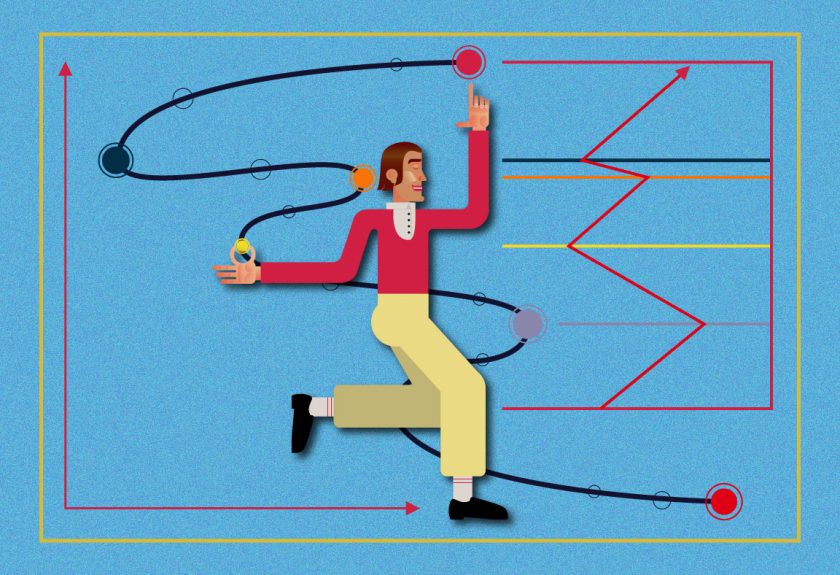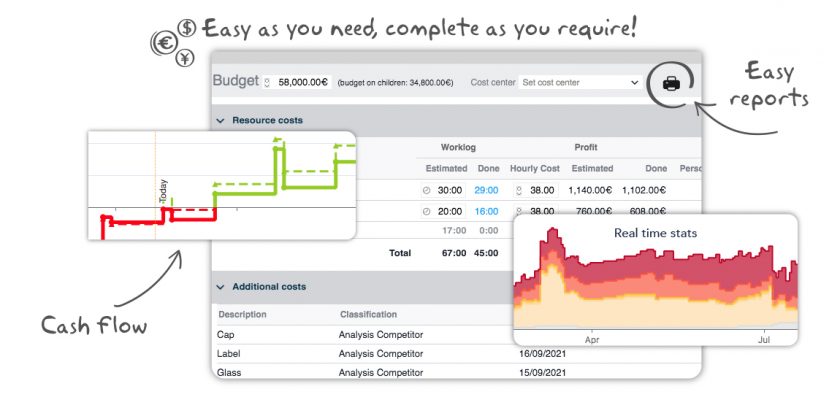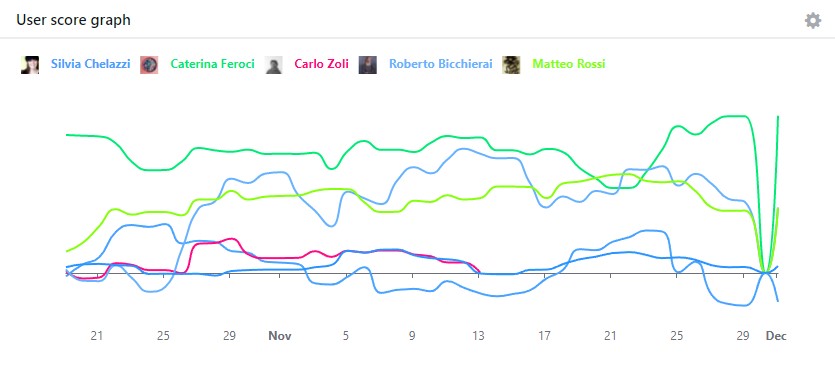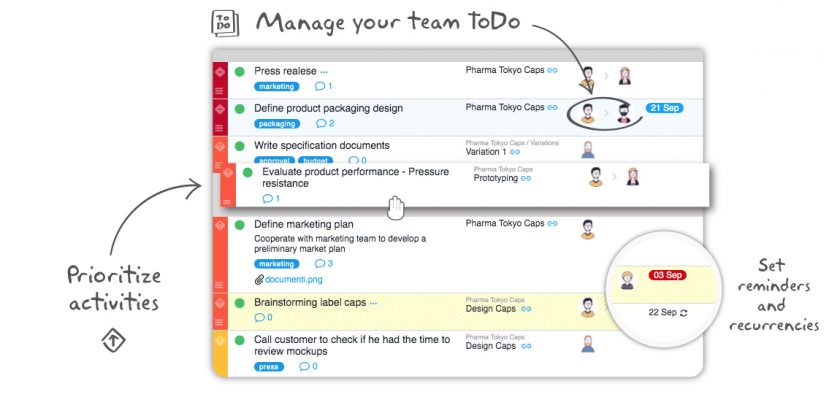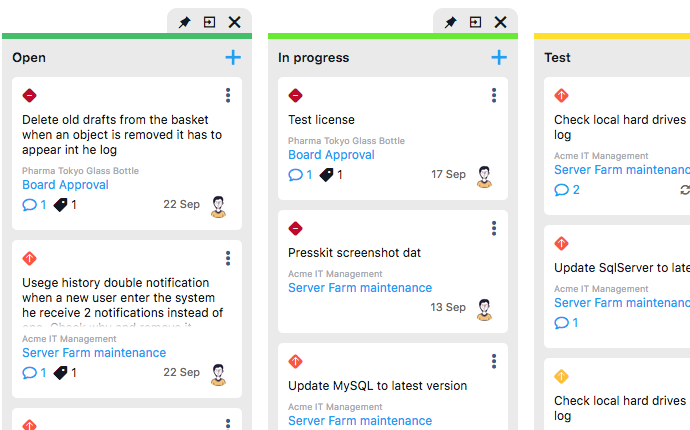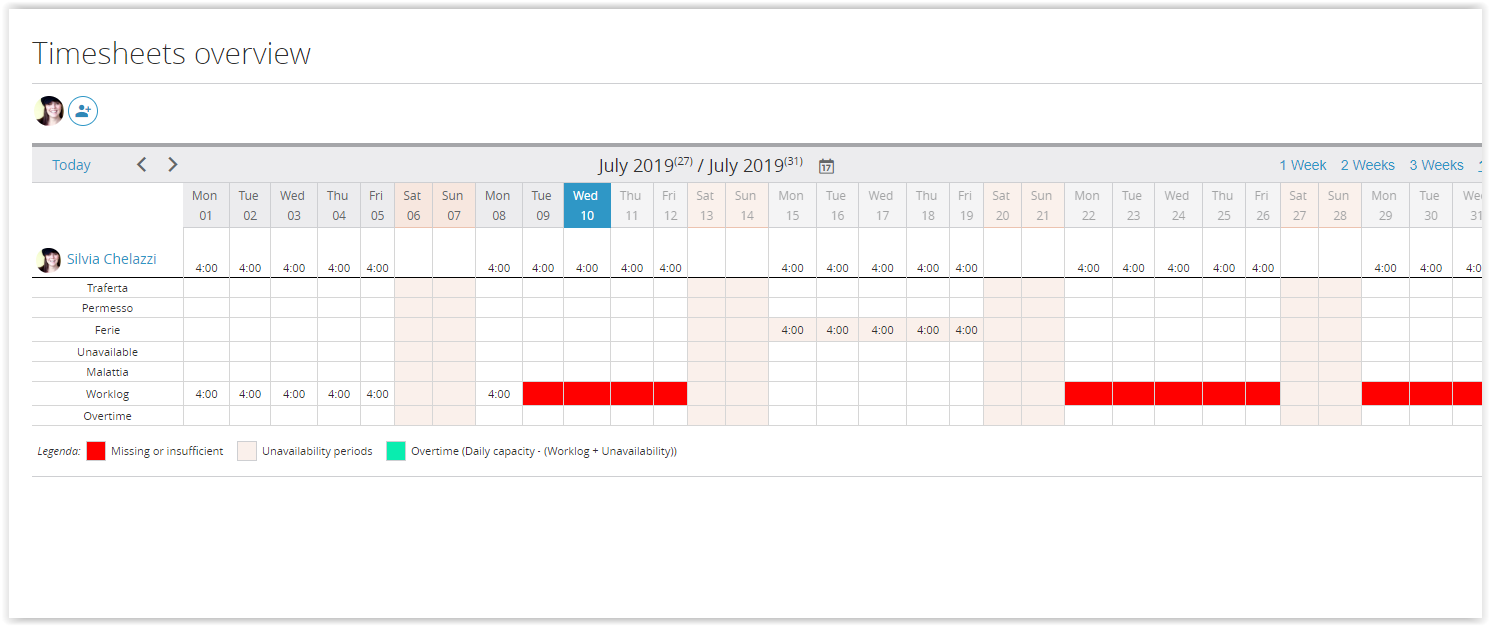-
Sprint planning: how to plan it to achieve your goals
Sprint planning is an essential part of the Scrum management process. CONTENT What is sprint planning? Sprint planning execution 1. Sprint planning meeting 2. Past sprints review 3. Establishing your sprint goal 4. Break down the objective into tasks Resource allocation 6. Setting a time period 7. Measuring progress 8. Sprint review Benefits of successful … Continue reading "Sprint planning: how to plan it to achieve your goals"
-
Project costs: everything under control
A successful project must not only be on time, but also on your budget. In this article we will see how Twproject manages project costs. The overall cost of a project depends mainly on the scope of application; the list of items contributing to the total will be very different between a consultancy project, a … Continue reading "Project costs: everything under control"
-
Best project management software in 2022
If you’re looking for the best project management software, you’ve finally landed on the right list. Online you will find many lists like this one, but most of them always include the same software which, let’s face it, does not solve even 10% of all the problems that a project manager and more generally a … Continue reading "Best project management software in 2022"
-
Motivate and monitor the use of a tool: user scores
A project management software like Twproject, to be really effective, has to be used by all the team, so, how can we valuate if and how much the software is really used? The question is apparently simple, but it hides some pitfalls. Twproject is a PM software used by different user profiles: Project managers, Workers, … Continue reading "Motivate and monitor the use of a tool: user scores"
-
ToDo’s become adults?
A “to-do list” is a primal yet powerful tool for organizing. We make lists for all occasions. You start as a child with the wish list for Santa Claus. You are growing up and your list becomes a shopping list, a travel list or a documents list necessary to open a bank account. Even at … Continue reading "ToDo’s become adults?"
-
Kanban software for project management
Kanban, is a Japanese words which means + or- sign or tag, it is part of a production organization method (called TPS) adopted in the 1950s at Toyota factories. In project management, the use of Kanban has become a real methodology that is perfectly reflected in the principles of the Agile Methodology. The Agile movement … Continue reading "Kanban software for project management"
-
2020 Project Management Trends
It is essential to know and be aware of the 2020 project management trends. Projects have always existed and will always exist. CONTENTS 2020 Project Management Trends: Automation and Artificial Intelligence 2020 Project Management Trends: increasing the commercial value of soft skills 2020 Project Management Trends: an increasing trend towards fusion of methods 2020 Project … Continue reading "2020 Project Management Trends"
-
Save yourself from those creepy projects!
It’s Halloween this night and you, just like a toddler, are scared…not by vampires, witches or creepy mummies but by those projects that will never end in time nor in budget. I know it sounds familiar, but Twproject is here to help with a new fantastic release and a special 15% coupon discount for all … Continue reading "Save yourself from those creepy projects!"
-
New Twproject Release 6.5.65011 – Project progress check bars on Gantt
Twproject is out with a small new release including some bug fixes and a new interesting feature. Twproject 6.5.65011 includes a new bar that can be activated on your Gantt showing task progress over time. You can pick a date, or more than one and see the progress status of your task at that specific … Continue reading "New Twproject Release 6.5.65011 – Project progress check bars on Gantt"
-
Communicate with the project team: the best techniques to use
A good communication with team is the main method for excellent project management. In fact, effective communication allows a project to have a successful conclusion, but on the other hand, bad communication could be fatal. The project teams are in a constant state of communication: e-mails, videoconferences, phone calls, messages, face-to-face discussions, and non-verbal interactions. CONTENT … Continue reading "Communicate with the project team: the best techniques to use"
-
The level of detail of a time schedule
Creating a complete schedule is one of the most difficult tasks that a project manager has to face. CONTENT INDEX 5 basic steps for preparing a time schedule The details of a time schedule Level 1 Level 2 Level 3 Level 4 Level 5 Important notes on the level of detail in a time schedule … Continue reading "The level of detail of a time schedule"
-
New Twproject Release 6.5.65009 – Attendance Overview & Task File Storage
We are finally out with a new great release (6.5.65009). Among lots of improvements and fixes, we include 3 new fantastic features: a dedicate page for resource attendance, 1 new widgets that will enrich your dashboard and last but not least a new way to link a specific file storage to your entire task tree. You can … Continue reading "New Twproject Release 6.5.65009 – Attendance Overview & Task File Storage"
-
The AGID three-year plan in the new 2019-2021 program
The three-year plan AGID (Agenzia per l’Italia Digitale, as it is often called) is officially known as the Three-Year Plan for Information Technology in the Public Administration. This is a strategic document, always published in September, which is a guide and support for digital transformation in Italy. A digital transformation also in line with what … Continue reading "The AGID three-year plan in the new 2019-2021 program"
-
Project management events in 2019: An overview in Italy and Europe
Project management conferences are an excellent way to meet new people, do networking and improving one’s skills. Obviously, it is not always worth participating to all of them. We thought, therefore, to do a selection of the most important events. Basically, a list of the major Project Management events that will take place in Italy … Continue reading "Project management events in 2019: An overview in Italy and Europe"
-
New Twproject 6.5.65004
A new Twproject release is out today, with some small enhancement and some bug fixes. This release is free for all plan and does not contain any schema update. For the complete list of changes take a look out our change log. Features This new release includes a new rich HTML editor that you can … Continue reading "New Twproject 6.5.65004"
News
Choose the category you are interested in:
AgileComparisonCost managementPm expertProduct updatesProductivityProject managementResource managementTime managementUsage tips

